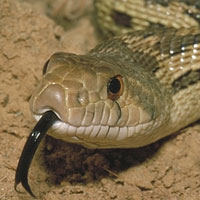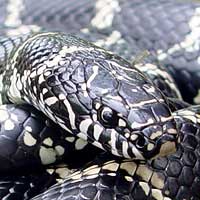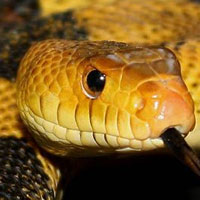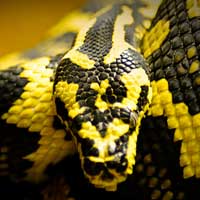Discover the Saw-scaled Viper: A Guide to One of the Deadliest Snakes
The Saw-scaled Viper (Echis carinatus) belongs to the Viperidae snake family, known for its highly venomous species equipped with long, hinged fangs and potent hemotoxic venom. This small but deadly snake is native to arid and semi-arid regions across Africa, the Middle East, and the Indian subcontinent.
Scientific Name: Echis carinatus
Snake Family: Viperidae
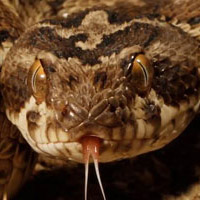
An Overview of the Saw-scaled Viper
The Saw-scaled Viper (Echis carinatus) is one of the smallest yet most dangerous venomous snakes in the world, responsible for more human fatalities than any other snake species due to its widespread range and potent venom. Found across arid and semi-arid regions in Africa, the Middle East, and the Indian subcontinent, this viper is renowned for its distinctive defensive behavior of rubbing its scales together to produce a unique "sizzling" sound. Despite its small size, typically measuring only 2 to 3 feet, the Saw-scaled Viper is highly aggressive and quick to strike, making it a formidable predator and an essential part of its ecosystem.
Where Does the Saw-scaled Viper Live?
The Saw-scaled Viper thrives in a variety of dry and arid environments. Key habitat details include:
- Geographic Range: Found in Africa, the Middle East, and the Indian subcontinent.
- Preferred Environments: Arid deserts, scrublands, rocky terrain, and dry grasslands.
- Climate: Adapted to hot and dry climates, with occasional activity in cooler conditions at night.
This snake is often found hiding under rocks, within leaf litter, or in burrows to escape the heat of the day. Its excellent camouflage allows it to blend seamlessly into its surroundings, making it challenging to spot. Below is a table summarizing its habitat preferences:
| Habitat Feature | Description |
|---|---|
| Geographic Range | Africa, Middle East, Indian subcontinent |
| Preferred Terrain | Deserts, scrublands, rocky terrain |
| Climate | Hot and arid |
What Does the Saw-scaled Viper Eat?
The Saw-scaled Viper is a carnivorous predator that plays a crucial role in controlling local pest populations. Key dietary information includes:
- Primary Prey: Small mammals such as rodents, which form the bulk of its diet.
- Occasional Prey: Frogs, lizards, and insects, depending on availability.
- Hunting Strategy: Ambush predator that relies on its camouflage to remain undetected before delivering a swift, venomous strike to immobilize prey.
Its ability to adapt its diet based on prey availability ensures its survival across diverse habitats. The Saw-scaled Viper's role in controlling rodent populations also helps prevent the spread of diseases in human-inhabited areas.
Understanding the Behavior of the Saw-scaled Viper
The Saw-scaled Viper is known for its defensive and aggressive behavior. Key traits include:
- Activity Patterns: Primarily nocturnal, becoming active during cooler parts of the day or night.
- Defensive Behavior: Emits a distinctive "sizzling" sound by rubbing its scales together when threatened, followed by quick, unpredictable strikes.
- Social Behavior: Solitary, except during the mating season or when basking in shared sunny spots.
This viper's unique behavior and small size make it both fascinating and highly dangerous. Its quick strike and potent venom ensure its position as one of the deadliest snakes within its range.
Health and Lifespan of the Saw-scaled Viper
The Saw-scaled Viper is a hardy species with a lifespan that reflects its resilience. Important health considerations include:
- Lifespan: 10-12 years in the wild, with individuals in captivity often living slightly longer.
- Health Threats: Habitat destruction, human activity, and predation are significant risks.
- Predators: Birds of prey, mongooses, and larger snakes are common threats to this viper.
Conservation efforts focused on habitat preservation and reducing human-wildlife conflict are vital to the long-term survival of this species.
How Does the Saw-scaled Viper Reproduce?
The reproductive cycle of the Saw-scaled Viper is well-suited to its environment. Key details include:
- Mating Season: Occurs during cooler months, typically in the spring or early summer.
- Reproductive Method: Oviparous, meaning females lay eggs that hatch outside the body.
- Clutch Size: Produces 5-15 eggs per clutch, depending on the female’s size and health.
- Hatchling Behavior: Newborns are fully venomous and capable of hunting small prey immediately.
Successful reproduction is closely tied to environmental conditions, emphasizing the importance of stable habitats for this species.
Safety Guidelines for Handling the Saw-scaled Viper
Handling the Saw-scaled Viper requires extreme caution and expertise. Essential safety measures include:
- Use specialized tools such as snake hooks and secure transport containers.
- Wear protective gloves and boots to minimize the risk of envenomation.
- Ensure enclosures replicate the snake’s natural habitat and are escape-proof.
- Keep antivenom readily available and have an emergency response plan in place.
Only trained professionals should handle this species. Public education about its behavior and ecological role can help reduce fear and unnecessary harm to both humans and the snake.
Disclaimer
The information provided in this article is for educational purposes only. SnakeEstate strongly advises against handling or interacting with venomous snakes, such as the Saw-scaled Viper, unless you are a trained and licensed professional. These snakes pose significant risks, and improper handling can result in serious injury or death. Always adhere to local regulations and prioritize safety when dealing with wildlife.
Other Snakes In This Species
 Asp Viper
Asp Viper Black Mamba
Black Mamba Boomslang
Boomslang Brazilian Coral Snake
Brazilian Coral Snake Bushmaster
Bushmaster Coastal Taipan
Coastal Taipan Common Death Adder
Common Death Adder Common European Adder
Common European Adder Copperhead
Copperhead Coral Snake
Coral Snake Cottonmouth
Cottonmouth Eastern Brown Snake
Eastern Brown Snake Eastern Diamondback Rattlesnake
Eastern Diamondback Rattlesnake Egyptian Cobra
Egyptian Cobra Fer-de-lance
Fer-de-lance Forest Cobra
Forest Cobra Indian Cobra
Indian Cobra Inland Taipan
Inland Taipan Jameson’s Mamba
Jameson’s Mamba King Cobra
King Cobra Lancehead
Lancehead Lataste’s Viper
Lataste’s Viper Malayan Krait
Malayan Krait Mojave Rattlesnake
Mojave Rattlesnake New Guinea Small-eyed Snake
New Guinea Small-eyed Snake Nose-horned Viper
Nose-horned Viper Puff Adder
Puff Adder Russell’s Viper
Russell’s Viper Saw-scaled Viper
Saw-scaled Viper Solomon Island Coral Snake
Solomon Island Coral Snake South American Rattlesnake
South American Rattlesnake Tiger Snake
Tiger Snake Western Diamondback Rattlesnake
Western Diamondback Rattlesnake



